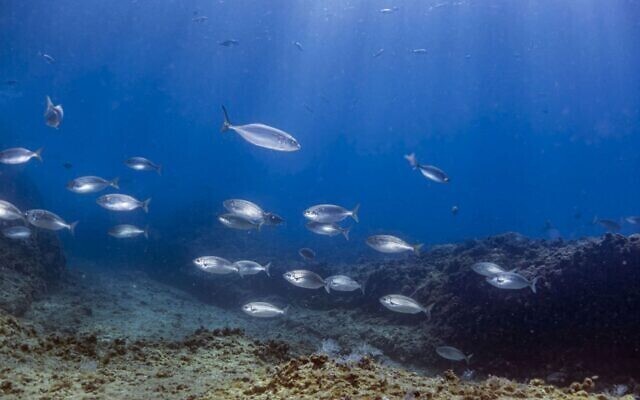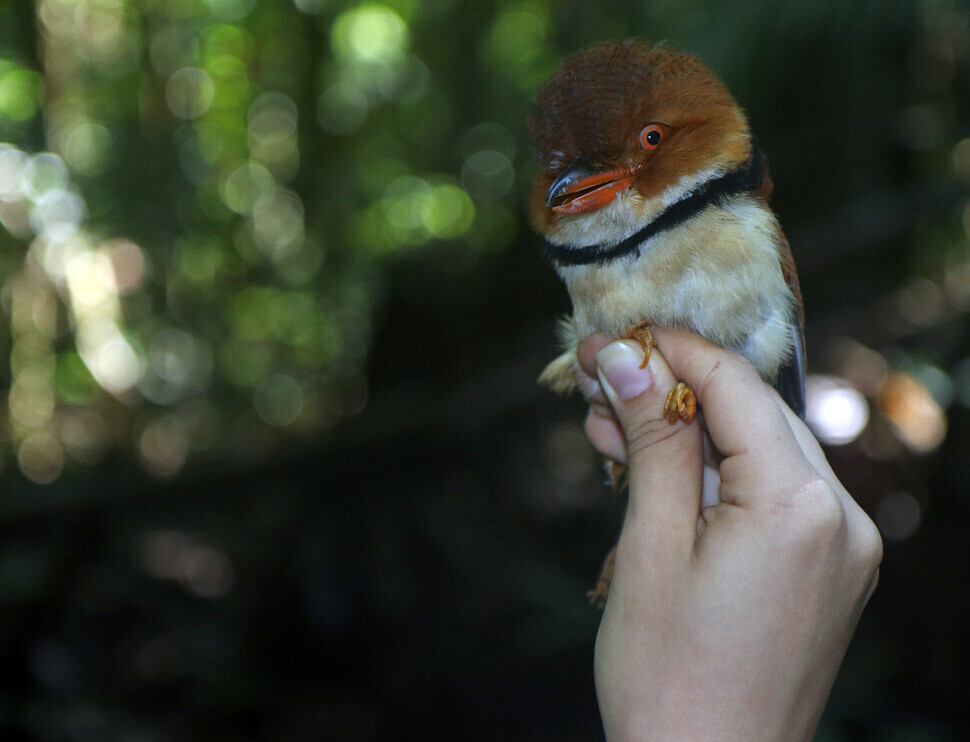hankyoreh
Links to other country sites 다른 나라 사이트 링크
While humans delay climate change response, animals are already adapting

While humankind struggles to speed up its response to climate change through an end to coal-fired power generation and other measures, more and more cases of animals quickly adapting to global warming are being observed.
A research team at Tel Aviv University reported on Sunday that an analysis of the habitats of 236 marine species, including fish, crustaceans, squid and other mollusks showed that animals in the Mediterranean had migrated to deeper areas with average water depths of 55 meters. Their research was published on Friday in the journal “Global Ecology and Biogeography” (DOI: 10.1111/geb.13414).

Global average temperatures are 1.09 degrees Celsius higher now than they were before the Industrial Revolution. But in the Mediterranean Sea, warming has been even more intense, with a rise of 1 degree every 30 years.
The research team performed a comparative analysis on water depth and temperature data for 236 species captured through bottom-trawl surveys since 1990, as reported in various studies.
Their findings showed that the tendency to migrate to deeper areas was not identical for all marine species. Specifically, they found that cold-water species relocated to deeper areas than warm-water species. Also, species that live in broad, deep environments relocated to deeper areas than those that live in narrow, shallow environments, while those that inhabit broad temperature zones migrated to deeper areas than those that inhabit only narrow temperature zones.
Jonathan Belmaker, one of the article’s co-authors, explained, “It should be remembered that the Mediterranean was hot in the first place, and now we are reaching the limit of many species’ capacity.”
The article’s lead author is Shahar Chaikin, who is currently a post-doctoral researcher under Belmaker.
“[W]hen we think about the future, decision-makers will have to prepare in advance for the deepening of species. For example, future marine nature reserves will need to be defined so that they can also provide shelter to species that have migrated to greater depths,” Chaikin said.
“And on the other hand, fishing in the future will involve fishing the same fish at greater depths, which means sailing further into the sea and burning more fuel,” he added.
“Even if species deepen to escape the warm waters and this rapid adaptation helps them, there is still a limit -- and that limit is the seabed,” Belmaker said. “We are already seeing deep-sea fish like cod whose numbers are declining, probably because they had nowhere deeper to go.”

A paper published in Science Advances on Friday by another research team claims that birds in the Amazon rainforest are becoming smaller and developing longer wings due to global warming. While some prior research has found that the bodies of birds are gradually becoming smaller, most of these studies referred to sparrows and cited hunting, pesticides and loss of habitats as the causes. In contrast, this study focused on sedentary birds that have lived in the Amazon rainforest since prehistoric times, and the research team believes the warming climate is the sole culprit
This study took place at the Amazon Biodiversity Center in Brazil, which has researched the impact of deforestation and development on ecosystems since the 1970s. Part of the center’s research involves catching birds with a net to weigh them and measure the length of their wings. Over four decades, researchers have measured the wing length and body proportions of around 15,000 birds, finding that all of the 77 species studied had seen a decrease in average weight, with 36 species losing 2% in body mass every decade since 1980. During the same period, the average wing length increased in 61 of these species.
The research team believes that global warming is the reason behind these morphological changes. Since the 1970s, temperatures have risen 1.65 degrees Celsius during the dry season and 1.0 degrees during the rainy season. The rainy season has become more humid, while the dry season has become even drier.
“There is no doubt that fluctuations in temperature and humidity are the cause of these changes,” said Vitek Jirinec, a researcher at the Integral Ecology Research Center in California and the paper’s primary author.
The study cites Bergmann’s rule, which states that when identical or similar species are compared, those in colder climates have larger bodies, while those in warmer climates are smaller. This hypothesis was put forward by 19th-century German zoologist Carl Bergmann. The theory is that in colder regions, organisms need to reduce the amount of body heat they emit in order to survive, and being larger reduces the proportion of surface area exposed to the outside world.
However, the cause of the longer wing length remains a mystery. The researchers assumed that the increased wing length was due to a need to fly longer distances but were unable to conclude whether this was the result of evolutionary pressure or birds adapting to the changing environment.
By Lee Keun-young, senior staff writer
Please direct questions or comments to [english@hani.co.kr]

Editorial・opinion
![[Column] Tariffs on China: Trump was dumb, Biden dumber [Column] Tariffs on China: Trump was dumb, Biden dumber](https://flexible.img.hani.co.kr/flexible/normal/500/300/imgdb/original/2024/0520/191716191153918.jpg) [Column] Tariffs on China: Trump was dumb, Biden dumber
[Column] Tariffs on China: Trump was dumb, Biden dumber![[Column] What if Seoul took reunification by force off the table? [Column] What if Seoul took reunification by force off the table?](https://flexible.img.hani.co.kr/flexible/normal/500/300/imgdb/original/2024/0520/3017161928630494.jpg) [Column] What if Seoul took reunification by force off the table?
[Column] What if Seoul took reunification by force off the table?- [Editorial] Intensifying US-China rivalry means Seoul must address uncertainty with Beijing sooner than later
- [Column] When ‘fairness’ means hate and violence
- [Editorial] Yoon must stop abusing authority to shield himself from investigation
- [Column] US troop withdrawal from Korea could be the Acheson Line all over
- [Column] How to win back readers who’ve turned to YouTube for news
- [Column] Welcome to the president’s pity party
- [Editorial] Korea must respond firmly to Japan’s attempt to usurp Line
- [Editorial] Transfers of prosecutors investigating Korea’s first lady send chilling message
Most viewed articles
- 13 months into doctors strike, finding an emergency room in Korea is harder than ever
- 2New doc undoes stereotypes of N. Korea with candid portraits of women’s football legends
- 3Is growing Korean investment in the US a win-win for both countries?
- 4Mass panic and trauma: Spate of random knife attacks unnerve Koreans
- 588% of Chinese firms would rather work with Korean partners than Japanese ones, survey finds
- 6[Reporter’s notebook] In Min’s world, she’s the artist — and NewJeans is her art
- 7[Column] What if Seoul took reunification by force off the table?
- 8US calls Jeju April 3 Incident a ‘terrible tragedy’ in first statement on bloody history
- 9Kim Jong-un wanted to meet with residents of shelled Yeonpyeong Island in South, Moon recalls in mem
- 10Ted Chiang among top thinkers on AI to speak at Hankyoreh Human & Digital Forum